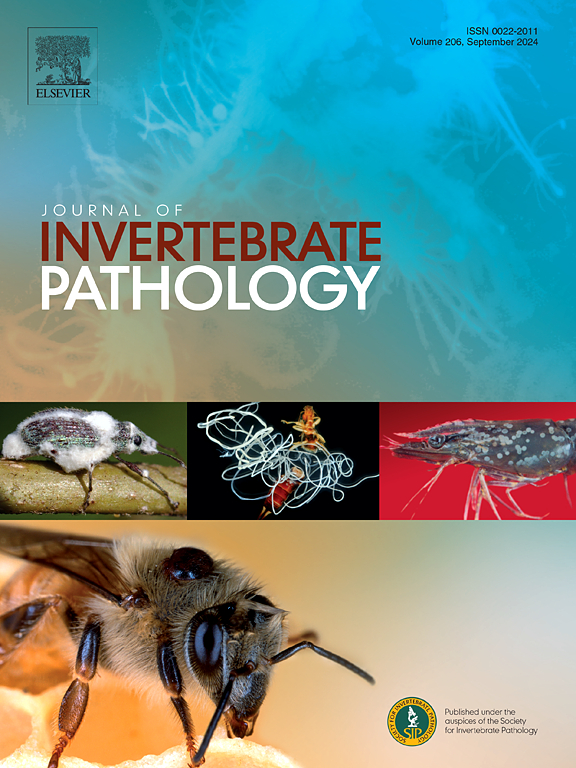Entomopathogenic nematodes: Survival, virulence and immunity
IF 2.4
3区 生物学
Q1 ZOOLOGY
引用次数: 0
Abstract
As entomopathogenic nematodes (EPNs) are used as biological control agents, their survival and persistence are crucial to ensure success in application against insect pests. The survival of Heterorhabditis and Steinernema species is dependent on abiotic and biotic factors in the environment. Abiotic stress environments such as desiccation, temperature, and ultraviolet radiation (UV) severely impact their performance on field. EPNs produce and secrete effector molecules during the early stages of infection to interfere with the molecular mechanisms that control the insect innate immune function. Also, EPN effectors facilitate the subsequent release and spread of their symbiotic bacteria within the host. Hence, a comprehensive understanding of the underlying survival and virulence mechanisms enabling protection against environmental conditions and insect host immune responses is imperative to realistically enhance their performance on field. Thus, identifying key players regulating EPN survival, virulence and immunity could invariably contribute towards developing more robust, reliable solutions and application strategies including genetic tools and formulation technologies.

昆虫病原线虫:生存、毒力和免疫
昆虫病原线虫作为一种生物防治手段,其生存和持久性是确保害虫防治成功的关键。异habditis和Steinernema物种的生存依赖于环境中的非生物和生物因素。干燥、温度、紫外线等非生物胁迫环境严重影响其田间性能。epn在感染早期产生和分泌效应分子,干扰控制昆虫先天免疫功能的分子机制。此外,EPN效应物促进宿主内共生细菌的释放和传播。因此,全面了解潜在的生存和毒力机制,以保护其免受环境条件和昆虫宿主免疫反应的影响,是切实提高其田间表现的必要条件。因此,确定调节EPN存活、毒力和免疫力的关键因素,必然有助于开发更强大、更可靠的解决方案和应用战略,包括遗传工具和配方技术。
本文章由计算机程序翻译,如有差异,请以英文原文为准。
求助全文
约1分钟内获得全文
求助全文
来源期刊
CiteScore
6.10
自引率
5.90%
发文量
94
审稿时长
1 months
期刊介绍:
The Journal of Invertebrate Pathology presents original research articles and notes on the induction and pathogenesis of diseases of invertebrates, including the suppression of diseases in beneficial species, and the use of diseases in controlling undesirable species. In addition, the journal publishes the results of physiological, morphological, genetic, immunological and ecological studies as related to the etiologic agents of diseases of invertebrates.
The Journal of Invertebrate Pathology is the adopted journal of the Society for Invertebrate Pathology, and is available to SIP members at a special reduced price.

 求助内容:
求助内容: 应助结果提醒方式:
应助结果提醒方式:


